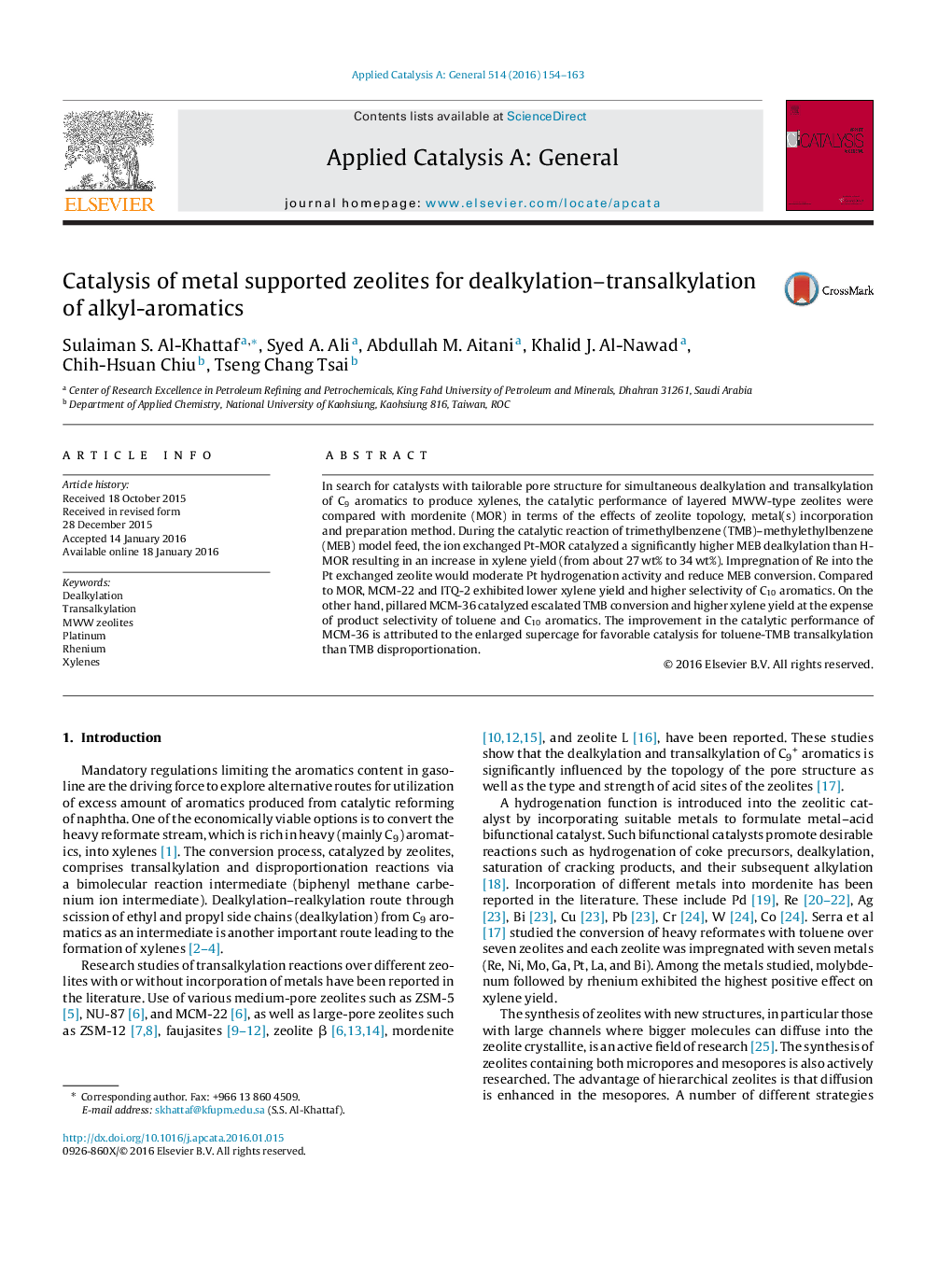| Article ID | Journal | Published Year | Pages | File Type |
|---|---|---|---|---|
| 38951 | Applied Catalysis A: General | 2016 | 10 Pages |
•Potential application of layered MWW-type zeolites for dealkylation–transalkyation was explored.•Effects of zeolite topology, metal (Pt or PtRe) incorporation, and preparation procedure were studied.•Significant promotion of MEB hydro-dealkyation by metal/acid bifunctional catalysts was observed.•Incorporation of Pt by ion-exchange was more effective for MEB dealkylation than impregnation.•Pillared MCM-36 (possessing mesoporosity) resulted in higher MEB and TMB conversions.
In search for catalysts with tailorable pore structure for simultaneous dealkylation and transalkylation of C9 aromatics to produce xylenes, the catalytic performance of layered MWW-type zeolites were compared with mordenite (MOR) in terms of the effects of zeolite topology, metal(s) incorporation and preparation method. During the catalytic reaction of trimethylbenzene (TMB)–methylethylbenzene (MEB) model feed, the ion exchanged Pt-MOR catalyzed a significantly higher MEB dealkylation than H-MOR resulting in an increase in xylene yield (from about 27 wt% to 34 wt%). Impregnation of Re into the Pt exchanged zeolite would moderate Pt hydrogenation activity and reduce MEB conversion. Compared to MOR, MCM-22 and ITQ-2 exhibited lower xylene yield and higher selectivity of C10 aromatics. On the other hand, pillared MCM-36 catalyzed escalated TMB conversion and higher xylene yield at the expense of product selectivity of toluene and C10 aromatics. The improvement in the catalytic performance of MCM-36 is attributed to the enlarged supercage for favorable catalysis for toluene-TMB transalkylation than TMB disproportionation.
Graphical abstractFigure optionsDownload full-size imageDownload high-quality image (246 K)Download as PowerPoint slide
